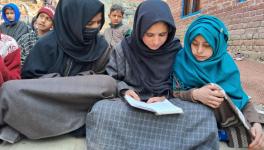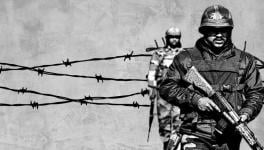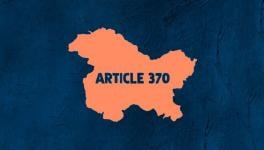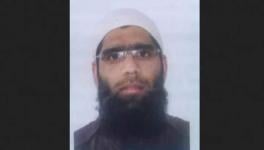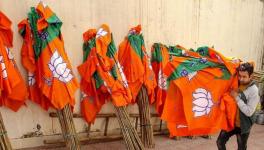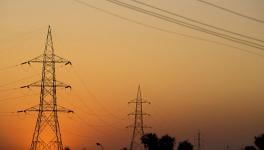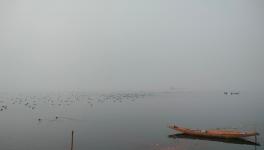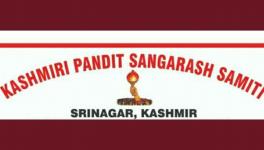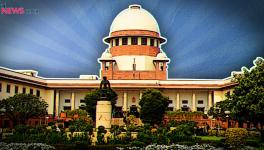Kashmir Interlocutors Report: Importance is in What it Does Not Say
The interlocutors report “A New Compact with the People of Jammu and Kashmir” would have been laughable had it not been so tragic.
;
A voluminous effort it is addressed to the audience in Delhi, and not at all an honest reflection of the ground situation in Jammu and Kashmir. In fact it is indicative of the prejudice with which Delhi regards Jammu and Kashmir, using terms and reaching conclusion’s (it is all about language stupid!) that have always inspired anger and resentment amongst the people at the receiving end.
;
Dileep Padgaonkar, Radha Kumar and M.M.Ansari who squabbled and fought, often in the public spotlights, their way through the arduous task of suggesting a solution and a road map for Jammu and Kashmir have fallen far short of the mandate. The most glaring omissions lie in what they have not said, or acknowledged, while assessing the so- called ground situation in the sensitive border state. For one, the peoples’ alienation with India that has taken the form of the ‘azadi’ slogan. The rather clever interpretation of the freedom slogan to mean freedom from religious extremism, from an opaque and unaccountable administration, from harsh laws, from pressures on the media and so on and so forth falls far short of recognizing, or even acknowledging, the burning issues within Kashmir that stem from gross injustice, violations, and exploitation at all levels.
What is even more surprising is that even the few issues that have been identified in this section identifying the issues from which the people, according to these interlocutors, want ‘freedom’ the Report does not suggest meaningful action on this limited front. The interlocutors have stopped far short of what could be acceptable proposals for a solution of Jammu and Kashmir. It is strange that even the solutions offered from time to time by some of the moderate separatist leaders in private and public conversation that are closer, than this report certainly, to the aspirations of the people are not even reflected in this “Compact,” whatever that means. This is not to say that these solutions are acceptable, but definitely worth examining. Also given the fact that India and Pakistan did strike some interesting new ground at one stage on a possible resolution acceptable to all, it is unacceptable to find an interlocutors report treading only the straight and very narrow path instead of hitting out at the barriers.
The interlocutors have not even suggested demilitarization as an option, considering this has become the demand of most Delhi based groups working in Jammu and Kashmir. Instead it has just asked for a review of the Armed Forces Special Powers act, and an amendment to the draconian Public Safety Act, again falling far short of the existing demands to revoke these laws.
There is not sufficient space in these columns for a detailed review of the “Compact”, that will of course follow, except to say that it is a highly conservative document that does not deal honesty and truthfully with the situation on the ground. And having failed in this assessment, it stands to reason that the conclusions arising out of this are faulty. And hence, the recommendations based on these conclusions fall short of the mark, making the interlocutors exercise meaningless, and a waste of time, resources and money. It would be interesting to find out the money spent in bringing out this Report that says little, and has already been rejected by the people of the Kashmir Valley. Even Chief Minister Omar Abdullah who has been treated rather gently by the interlocutors will find it difficult to defend the indefensible, more so as even he now is asking for the removal of AFSPA and not just a “review.”
The interlocutors have spoken of referring to various reports before writing their little doctrine, but perhaps they should have spent some time in going through the fact finding report brought out by key civil rights activists into the deaths of young boys over the spring and summer of 2010 at the hands of the security forces. This would have acquainted them with the true facts on the ground, the mood, the problems and some of what needs to be done immediately to address the problems.
There is a certain arrogance of the central government appointee evident through the report, that actually has the audacity to suggest that the fires of 2010 subsided because of the visits of the three interlocutors to the Valley. This has met with considerable amusement in the Valley, and even in Delhi. MHA has its own assessment of why the trouble subsided, and while one can fault many of the conclusions drawn by the officials, they certainly have not attributed peace to the visits of the three interlocutors. Interestingly, the “Compact” does not seem to have any idea of why the trouble subsided, and goes on to make the mistake of looking at the incident free Valley as peaceful. There is little to no recognition of the turbulence under the façade.
The discrimination is evident in the recommendations on the media. For instance the “Compact” makes a distinct difference between the media in the rest of India, and in Jammu and Kashmir without actually saying as much. But it is implicit in the recommendations that for instance note that the publishers claim that newspapers are denied government advertisements if they do not toe the line, while the government “alleges that certain newspapers publish unsubstantiated stories and engage in a vilification campaign” and suggest that these charges need to be investigated. Why? These are the same charges being made all over India, with the government always pitted against a free and fair media where it exists. So why should it become a matter of investigation in Kashmir, more so when it is widely known that the government interferes on a daily basis in manipulating the news.
The interlocutors are also worried about publishing houses inflating figures, and want this to be checked by Audit Bureaus etc. Fine, but what about newspapers in which one of the interlocutors worked. They are known to fudge the figures and the books as well and while two wrongs do not make a right, this is certainly not an issue that needs to be singled out as a specific recommendation. One wonders why, and perhaps it has to do with the fact that the interlocutors were not particularly welcomed by the Kashmiri media. The ‘Compact” wants a thorough investigation into the sources of funding of the newspapers in Kashmir, that has been incidentally carried out by the government and intelligence agencies at work in the state over and over again.
But more sinister are two recommendations on the media that seek to establish the supremacy of Delhi over Srinagar. One, that journalists from the state should be provided short-term training in institutes of mass communication instead of insisting that such training institutes should be opened all over Jammu and Kashmir to cope with the youth’s increased interest in the media. And that national newspapers should be encouraged to publish Jammu and Kashmir editions, in yet another indication that the local media that has flourished in the state should be curbed. This conclusion is drawn from the absence of suggestions to strengthen the vibrant local media, and free it from intrusive and unhealthy government intervention.
The Compact thus might give the three interlocutors more speaking assignments all over India and the world but it contains little for the affected people of the state.
Get the latest reports & analysis with people's perspective on Protests, movements & deep analytical videos, discussions of the current affairs in your Telegram app. Subscribe to NewsClick's Telegram channel & get Real-Time updates on stories, as they get published on our website.









